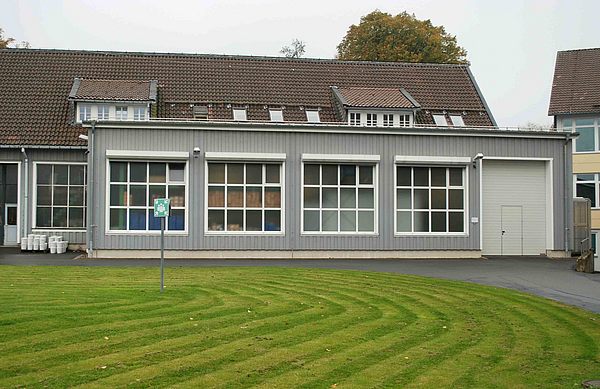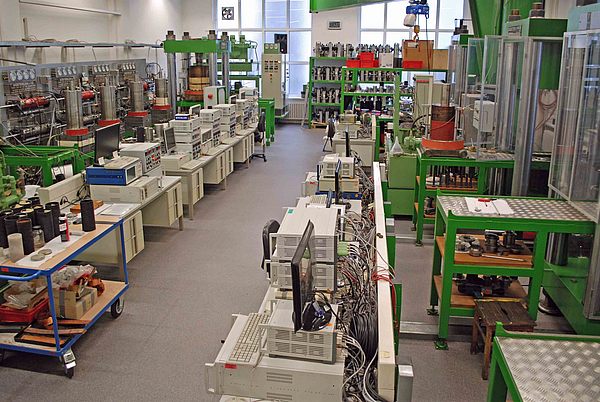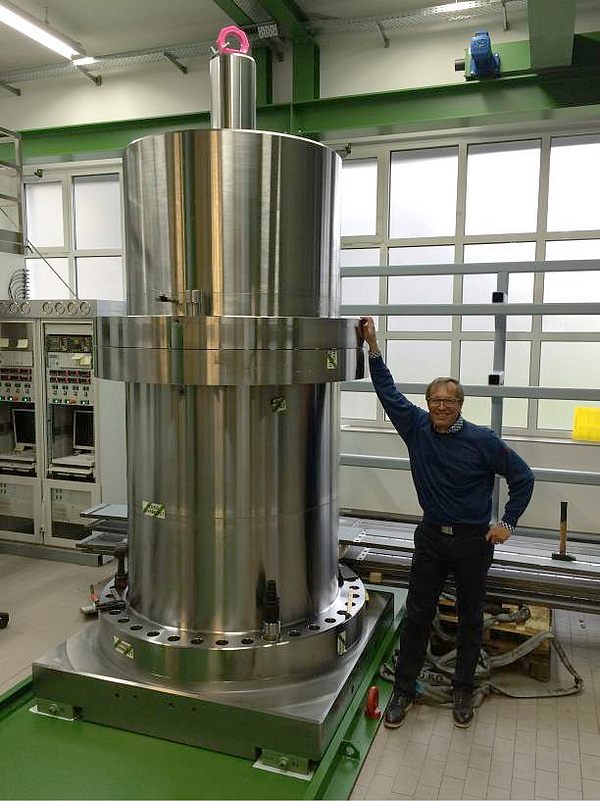Laboratory
Rock Mechanical Laboratory
The knowledge of the thermomechanical and hydraulically behaviour of the in situ rock mass is a main assumption to proof the static stability and tightness of underground excavations. In opposite to artificial materials like concrete and steel the material behaviour of natural rock mass respectively natural rock is characterized by a relatively wide scatterband depending on the mineralogical composition and genesis. Determination of the scatterband must be done by laboratory tests using site specific core samples to provide representative material parameters. Rock salt as well as clay stone are characterized by a distinct nonlinear, time-, stress- and temperature-depended as well as rate sensitive material behaviour. As a consequence of this complex material behaviour the material properties to quantify the stress-strain behaviour must be analysed by laboratory tests, taken into account
- stress level,
- stress geometry,
- stress rate,
- moisture,
- bedding,
- temperature and
- time
Additionally to the aforesaid mentioned stress-strain-relationship critical values and criteria are needed to proof the static stability and tightness of underground excavations. Therefore laboratory investigations into the thermomechanical and hydraulically material behaviour of natural rock respectively rock mass is one main element in planning of framework and structural design. Regarding to the documented laboratory equipment the chair of Waste Disposal Technologies and Geomechanics is well appointed by a powerful physical lab. A first overview of the performance data is given by the outlined informations. Based on the possibility of short term modifications of the outlined testing equipment, thermomechanical and hydraulically tests can be considering loading paths in any order.
![[Translate to English:] [Translate to English:]](/fileadmin/_processed_/9/b/csm_labor_81ac65a193.jpg)



![[Translate to English:] [Translate to English:]](/fileadmin/_processed_/f/3/csm_einaxialpr%C3%BCfanlage_d%C3%BC6_1_d9c8433598.jpg)
![[Translate to English:] [Translate to English:]](/fileadmin/_processed_/9/f/csm_triaxialpr%C3%BCfanlagen_d%C3%BC1_d%C3%BC4_1_c45724ff8e.jpg)
![[Translate to English:] [Translate to English:]](/fileadmin/_processed_/d/7/csm_triaxialpr%C3%BCfanlagen_d%C3%BC8_d%C3%BC11_1_c22d49dc32.jpg)
![[Translate to English:] [Translate to English:]](/fileadmin/_processed_/9/4/csm_triaxialpr%C3%BCfanlagen_d%C3%BC12_d%C3%BC15_1_c4e65d4012.jpg)
![[Translate to English:] [Translate to English:]](/fileadmin/_processed_/3/1/csm_triaxialpr%C3%BCfanlagen_d%C3%BC5_1_361a24cc10.jpg)
![[Translate to English:] [Translate to English:]](/fileadmin/_processed_/0/b/csm_triaxialpr%C3%BCfanlagen_d%C3%BC16_d%C3%BC19_2_64c8d5f607.jpg)
![[Translate to English:] [Translate to English:]](/fileadmin/_processed_/4/1/csm_felsrahmenscherger%C3%A4t_8d878a2317.jpg)